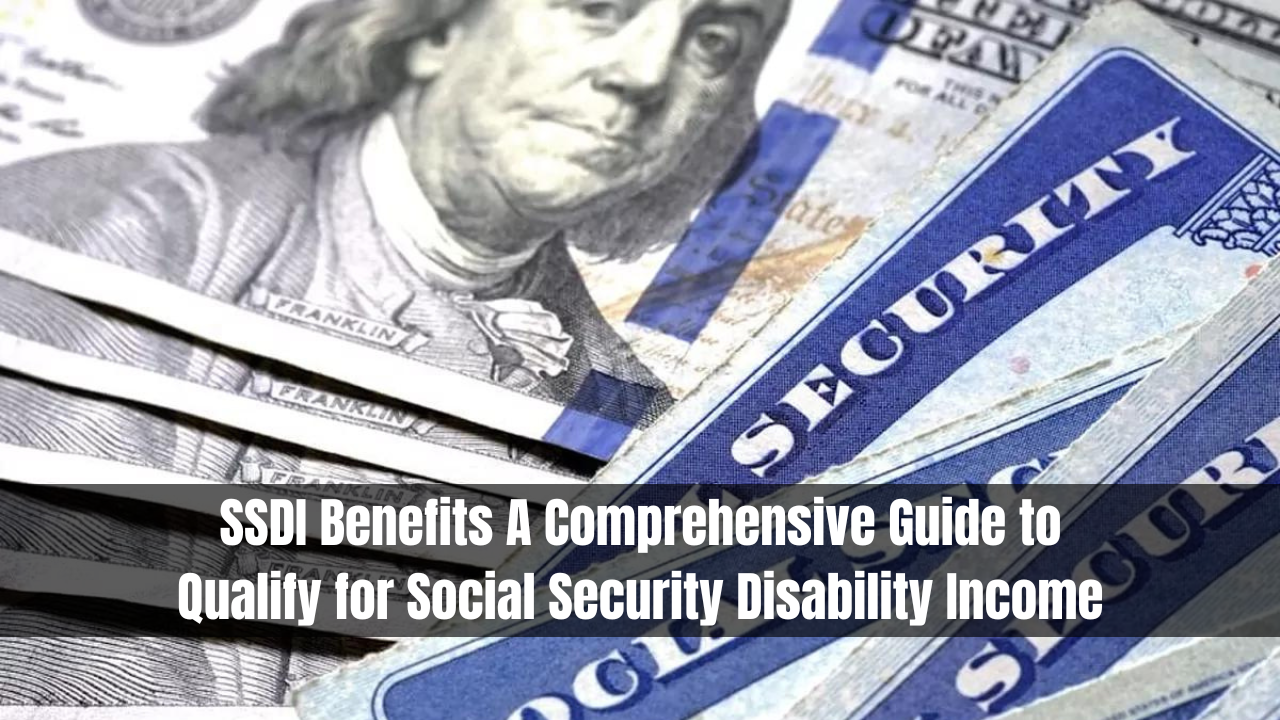SSDI
SSDI Benefits: A Comprehensive Guide to Qualify for Social Security Disability Income

Eligibility Requirements for SSDI
SSDI Benefits: A Comprehensive Guide to Qualify for Social Security Disability Income. To secure monthly SSDI (Social Security Disability Income) from the Social Security Administration, Americans must adhere to specific eligibility criteria. These criteria are non-negotiable, making it crucial to meet them to qualify for disability benefits.
Read Also: Massive Bank Branch Closures in the USA: Understanding the Situation
- Work Credit Requirements
In order to qualify for SSDI, individuals must have accumulated a sufficient number of work credits through employment covered by Social Security. Typically, this involves working for at least one year, which covers 50% of the Social Security options. - Medical Condition Definition
Applicants must be in a medical condition that aligns with the Social Security Administration’s (SSA) definition of disability. However, this definition isn’t always straightforward, as it varies on a case-by-case basis. The SSA struggles at times to determine if an individual’s condition qualifies for SSDI benefits. Detailed information can be found on the SSDI website, but due to the individual nature of disability cases, determining eligibility can be complex.
Maintaining SSDI Benefits
Once approved for SSDI benefits, it’s essential to meet certain requirements to continue receiving the monthly benefit. Failure to meet these requirements can result in the discontinuation of SSDI payments. These requirements include sustaining a specific financial level and continuing to fulfill the eligibility criteria, such as work credits and the definition of disability.
Income Limits with Social Security Disability
It’s possible to work while receiving SSDI, but individuals must be cautious about their monthly income to avoid losing their SSDI benefits. The income limits vary depending on whether the beneficiary is blind or non-blind:
- Non-Blind Beneficiaries: A maximum monthly income of $1,470 is allowed.
- Blind Beneficiaries: A maximum monthly income of $2,460 is permitted.
Exceeding these income limits could lead to the loss of SSDI benefits. Additionally, SSDI benefits can be terminated if the recipient’s health improves to the point where they no longer meet the SSA’s definition of disability.
Maximizing Your SSDI Benefits
In 2023, the maximum SSDI benefit is $3,627 per month. However, starting in January 2024, this amount will increase due to the Cost of Living Adjustment (COLA). The anticipated COLA for the next year is 3.2%, which will raise the maximum monthly payment to $3,743.

-

 UNISA News6 months ago
UNISA News6 months agoUniversity Applications For 2024 Are Now Open
-

 Blog6 months ago
Blog6 months agoUnisa Online Application 2024-2025 – www.unisa.ac.za
-

 UNISA News4 weeks ago
UNISA News4 weeks agoUNISA Courses in Teaching Foundation Phase
-

 UNISA News4 weeks ago
UNISA News4 weeks ago1 Year Diploma Courses at UNISA
-

 Blog4 weeks ago
Blog4 weeks agoUnisa Online Application 2024-2025 Apply Now
-

 UNISA News6 months ago
UNISA News6 months agoUNISA Closing Date for Registration 2024
-

 UNISA News4 weeks ago
UNISA News4 weeks agoCan I Do Diploma In Teaching At UNISA?
-

 UNISA News4 weeks ago
UNISA News4 weeks agoRE5 Certificate UNISA



















